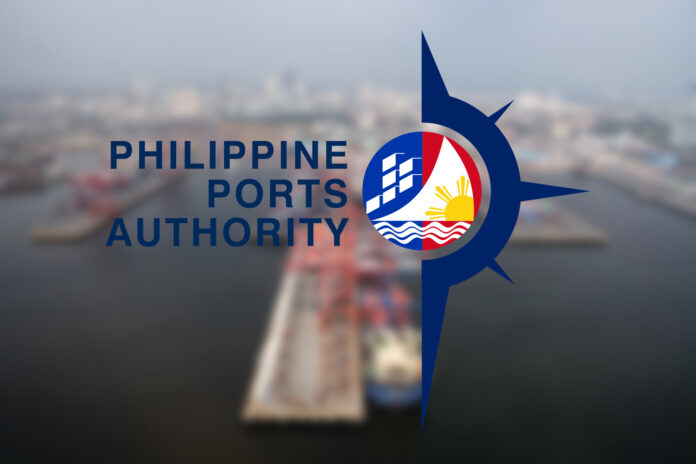-
Tier 3 port tariff stays, says PPA
-
This is despite calls from stakeholders who believe the rates are too high
-
PPA general manager Jay Daniel Santiago says the impact of Tier 3 rates is minimal
The Philippine Ports Authority (PPA) will continue implementing the new tariff for Tier 3 ports amidst calls from stakeholders to reconsider the rates, according to general manager Jay Daniel Santiago.
He said contrary to the assessment of some stakeholders, the impact of Tier 3 rates is minimal compared with other logistics costs.
“Medyo nakakasilaw lang pag tiningnan mo na 300% yung increase pero in terms of absolute peso value, napakaliit, sentimo lang yung pinag-uusapan natin (The 300% increase looks overwhelming, but in absolute peso value, we’re just talking of centavos),” Santiago said in a chance interview at the Batangas port passenger terminal.
Santiago said cargo-handling charges account for only around 5% of the total logistics costs with the bulk represented by “all the costs outside the port,” such as trucking, warehousing, labor, and fuel.
PPA in 2021 began implementing PPA Administrative Order No. 10-2019, which provides that uniform port tariffs be the base tariff to be used by operators that will win contracts for ports categorized as Tier 3 under PPA’s Port Terminal Management Regulatory Framework (PTMRF).
Since 2020, PPA has bid out 18 ports under Tier 3 category, of which 16 had already been awarded.
Just this month, a group of port users asked PPA to stop implementation of Tier 3 tariff for the Pasig River port, once the winning bidder takes over the Tier 3 port. The port users said the move will hike tariff for drybulk cargo by 949%, describing it as “unconscionable”.
The Pasig Port Users Against PPA Tariff Increases said the increased tariffs will “unnecessarily and punishingly burden the end consumer, who are already suffering from the current economic crisis.”
The group is instead proposing a tariff increase similar to that granted by PPA to Manila North Harbour Port, Inc. in 2017: a 24% increase implemented in three tranches of 8% annually for three years.
In 2021, several stakeholders and business groups, including the National Economic and Development Authority-Regional Development Councils VIII and IX, also asked PPA to suspend implementation of new tariffs under AO 10-2019 in various ports pending a thorough consultation with stakeholders.
The Philippine Chamber of Commerce and Industry Tacloban-Leyte Inc. earlier said in 2021 that, based on its computation, the new tariff at Tacloban Port would push the prices of goods upwards, with general cargo being the most affected as the 360% increase in port tariff would jack up the prices of commodities such as rice, cement, sugar, and feeds.
The Philippine Inter-island Shipping Association (PISA) had earlier requested the Lower House Committee on Transportation to review AO 10-2019, saying its rates are higher than the previous rates of Tier 3 ports and of North Port, the premier domestic port at Manila North Harbor.
During the August 2019 public hearing on the then proposed new uniform tariff for ports under PTRMF, PPA said it based its proposal on Cagayan de Oro Port’s rates, which were the highest among PPA ports.
Santiago defended the Tier 3 tariff, saying the improvement in port operations as a result of bidding out the ports and imposing a uniform tariff will, in the long, run, reduce overall logistics costs.
“Mas mumura siya in the long run but we really need to invest now and wala naman tayong source of investment kung hindi yung ating tariff, yung rates natin (It will be cheaper in the long run but we really need to invest now and we have no other source of investment but our tariff, our rates),” he explained.
He noted that PPA is a self-sustaining agency and does not get appropriations from the national government.
Santiago added: “We really need to improve and makikita ninyo naman…malaki na yung improvements dun sa mga ports natin. That’s where those tariffs are going. Ultimately mas bababa ang logistics costs. (We really need to improve and, as you can see, there have been great improvement at our ports. That’s where those tariffs are going. Ultimately, logistics costs will decline).”
Moreover, Santiago said PPA wants to maintain a uniform tariff “so that our development and funding for investment will be uniform.”
PPA earlier explained that, under the tariff structure prior to the issuance of AO 10-2019, cargo classification varies per port, and non-prime commodities are charged higher than prime commodities.
The non-uniform unit of charging often leads to confusion in the field, and that arrastre rates for handling conventional export cargoes in Manila are discounted while conventional export cargoes in the Visayas and Mindanao are not.
Stevedoring has also become the only nomenclature for all works performed on board a vessel and on the dock, which means arrastre has become a part of the stevedoring rate.
PISA earlier explained this sowed confusion among shipping lines and cargo owners, noting that stevedoring has always been a vessel-related charge paid for by the liners. – Roumina Pablo





